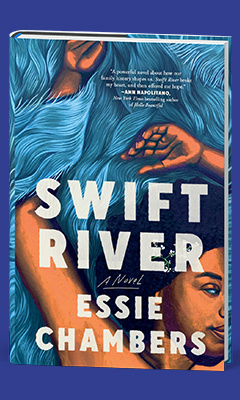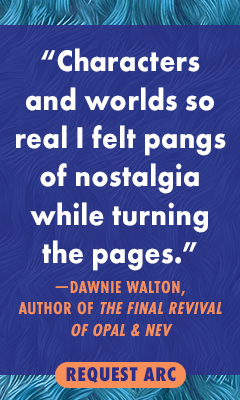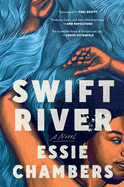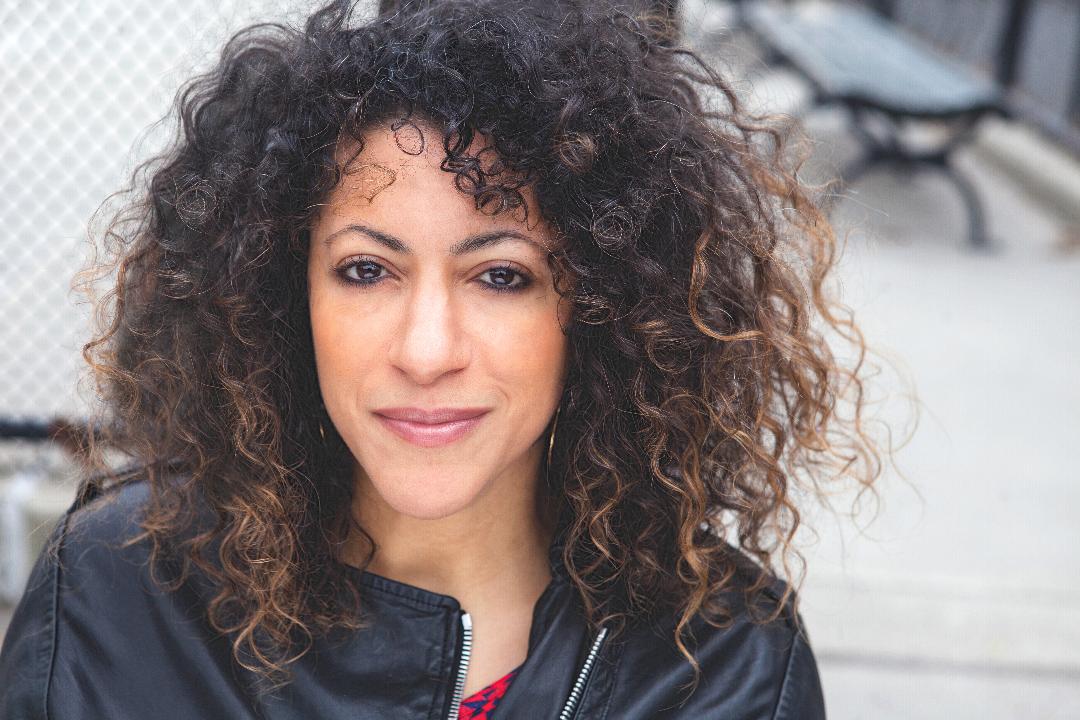Swift River
by Essie Chambers
Swift River tackles an impressively broad range of issues, including race, class, and body image, within the coming-of-age of Diamond Newberry. Essie Chambers's first novel, building upon her work in film and television (Descendant, 2022), is set in the decaying New England mill town of Swift River, with meditations on place and the effect of a hometown upon generations of lives. Sixteen-year-old Diamond narrates: "This isn't a mystery or a legend. It's a story about leaving. It starts with my body. My body is a map of the world." Her voice is strong, clear, and confident, interspersed with flashbacks to Diamond's life at age nine, when her father disappeared. These two timelines are eventually joined by letters from a previously unknown aunt and great-aunt, so that the voices of three women over decades triangulate a story of longing, family connections, and growing into oneself.
"Picture my Pop's sneakers: worn out and mud-caked from gardening, neatly positioned on the riverbank where the grass meets the sand." This indelible image, published in the newspaper, haunts Diamond as she mourns her lost father. He was the lone man of color in Swift River. "Pop is the only other brown I know. No one else in town has dark skin like ours, not even Ma, which is what makes our family different."
Years after the sneakers on the riverbank, in the summer of 1987, Diamond's Ma, of "pure Irish stock," is unemployed and dependent on pain pills after a traumatic car accident. Mother and daughter live in extreme poverty, and Diamond has dealt with her grief by eating. Diamond and Ma, like many mothers and daughters, have a complex, push-and-pull relationship, mutually dependent and melding love and disdain. By class, by race, by Diamond's weight--their household is defined by difference. Ma has a plan to finally get a death certificate for the missing Pop (now that the requisite seven years have passed) and collect his insurance. Diamond, at 16, has forged Ma's signature and signed herself up for driver's education classes. She seeks escape. Out of the blue, a letter from an Aunt Lena in Woodville, Georgia, disrupts Diamond's sense of herself and her heritage, and establishes her first link to any family since her beloved Pop disappeared.
As Diamond and Lena exchange letters, a new version of Swift River unfolds. Diamond learns about the past: "Time is folded in half. Black people live here, they call this town home. They are millworkers and cobblers, carpenters and servants. A 'Negro' church sits next to a 'Negro' schoolhouse; the mill bell carves up their days... clotheslines stretch across yards like flags marking a Black land... In one night, they're gone. Those were my people." Aunt Lena also sends Diamond older, preserved letters from Lena's Aunt Clara, so that three versions of Swift River emerge through the years. Race is at the heart of their stories, an issue Diamond has had little context for until now. As she grows into herself, and rebels against Ma--including learning to drive, a literalization of her need for movement and self-determination--she finds new family and a new version of the world she thought she knew.
Swift River is an ambitious novel. Diamond and Ma struggle with small-town ostracization and class. The history of Swift River, with its firm racial lines and exodus on the night the Black former residents called "The Leaving," as well as Pop and Diamond's personal experiences, offers access to a larger history of race in America. Diamond's choices about her own body, including food, track her sense of agency and self. The gravity of the novel's themes is leavened by Diamond's strengths: she is smart, sings beautifully, and takes initiative in her own life against all odds. At driver's ed, she makes a new friend, Shelly, a hard-edged girl with problems and hopes of her own. Between the many hardships, Chambers imbues the story with warm compassion, gentle humor, and a care and respect for relationships between women: Diamond and Ma, Diamond and Aunt Lena, Clara and her sister Sweetie. "Who is a person without their people?" Other than the significant absence of one man, this is a story about women.
Chambers's choice of the epistolary format is inspired, as Lena's and Clara's voices emphasize the importance of relationships and connection. Their perspectives on Swift River strengthen the significance of place and displacement. Lena writes to Diamond, "Your hometown makes you and breaks you and makes you again. Daddy said that to me. I wonder if that's how you'll feel about Swift River if you ever leave it?" The question of whether to stay or to go is at Swift River's heart, as Diamond told readers early on: "It's a story about leaving."
Featuring strong characters and a strong sense of place, amid numerous social issues and personal challenges, Chambers's first novel will appeal to a wide audience and stick with its readers long past its stirring final pages. --Julia Kastner








